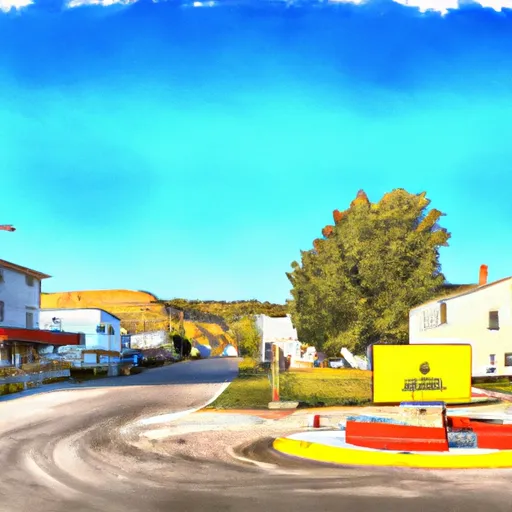-
 Snoflo Premium
Snoflo Premium
Get unlimited access to all our content
With no Ad interruptions! - Start Your Free Trial Login with existing account
Babb
Eden Index
Climate
7.1
•
Recreation
2.7
•
Community
0.7
•
Safeguard
3.9/10

Babb, Montana is a small community located near the eastern edge of Glacier National Park. The area experiences a relatively mild climate, with average temperatures ranging from the mid-20s in winter to the mid-70s in summer. The area is also known for its clean and clear water, with the local hydrology constituents consisting mainly of pristine rivers and streams, as well as crystal-clear lakes fed by mountain snowmelt. Outdoor recreation opportunities in the area include hiking in Glacier National Park, fishing in the nearby rivers and lakes, and wildlife spotting. Visitors can also enjoy scenic drives, birdwatching, and camping in the surrounding wilderness areas. Overall, Babb, Montana offers a unique outdoor experience for those seeking to connect with nature.
What is the Eden Index?
The Snoflo Eden Index serves as a comprehensive rating system for regions, evaluating their desirability through a holistic assessment of climate health, outdoor recreation opportunities, and natural disaster risk, acknowledging the profound impact of these factors on livability and well-being.
Climate Health Indicator (CHI): 7.1
Babb receives approximately
635mm of rain per year,
with humidity levels near 69%
and air temperatures averaging around
5°C.
Babb has a plant hardyness factor of
4, meaning
plants and agriculture in this region thrive during a short period during spring and early summer. Most
plants will die off during the colder winter months.
By considering the ideal temperature range, reliable water supplies, clean air, and stable seasonal rain or snowpacks, the Climate Health Indicator (CHI) underscores the significance of a healthy climate as the foundation for quality living.
A healthy climate is paramount for ensuring a high quality of life and livability in a region, fostering both physical well-being and environmental harmony. This can be characterized by ideal temperatures, reliable access to water supplies, clean air, and consistent seasonal rain or snowpacks.
Weather Forecast
Streamflow Conditions
Saskatchewan
Area Rivers
Saskatchewan
Snowpack Depths
Saskatchewan
Reservoir Storage Capacity
Saskatchewan
Groundwater Levels
Recreational Opportunity Index (ROI): 2.7
The Recreational Opportunity Index (ROI) recognizes the value of outdoor recreational options, such as parks, hiking trails, camping sites, and fishing spots, while acknowledging that climate plays a pivotal role in ensuring the comfort and consistency of these experiences.
Access to outdoor recreational opportunities, encompassing activities such as parks, hiking, camping, and fishing, is crucial for overall well-being, and the climate plays a pivotal role in enabling and enhancing these experiences, ensuring that individuals can engage in nature-based activities comfortably and consistently.
Camping Areas
| Campground | Campsites | Reservations | Toilets | Showers | Elevation |
|---|---|---|---|---|---|
| Two Medicine - Glacier National Park | 100 | 5,203 ft | |||
| St. Mary Lake - Glacier National Park | 150 | 4,524 ft | |||
| Police Outpost Provincial Park | 6 | 4,545 ft | |||
| Payne Lake Provincial Rec Area | 5 | 4,405 ft | |||
| Rising Sun - Glacier National Park | 85 | 4,550 ft | |||
| Lee Creek Municipal CG | 21 | 3,729 ft |
Catastrophe Safeguard Index (CSI):
The Catastrophe Safeguard Index (CSI) recognizes that natural disaster risk, encompassing floods, fires, hurricanes, and tornadoes, can drastically affect safety and the overall appeal of an area.
The level of natural disaster risk in a region significantly affects safety and the overall livability, with climate change amplifying these risks by potentially increasing the frequency and intensity of events like floods, fires, hurricanes, and tornadoes, thereby posing substantial challenges to community resilience and well-being.
Community Resilience Indicator (CRI): 0.7
The Community Resilience Indicator (CRI) recognizes that education, healthcare, and socioeconomics are crucial to the well-being of a region. The CRI acknowledges the profound impact of these elements on residents' overall quality of life. By evaluating educational resources, healthcare accessibility, and economic inclusivity, the index captures the essential aspects that contribute to a thriving community, fostering resident satisfaction, equity, and social cohesion.

